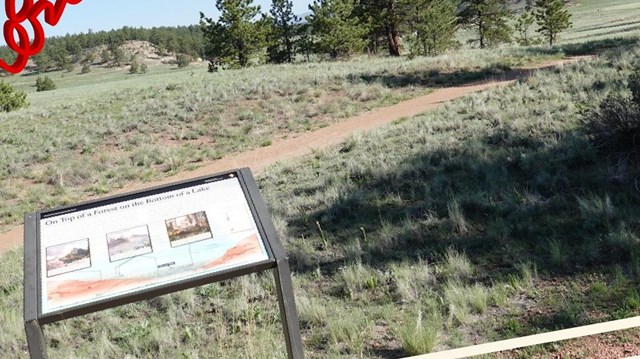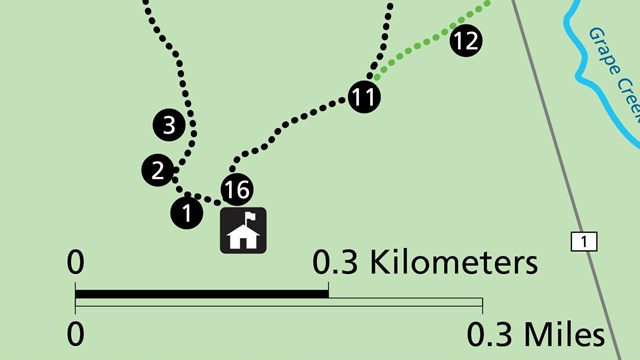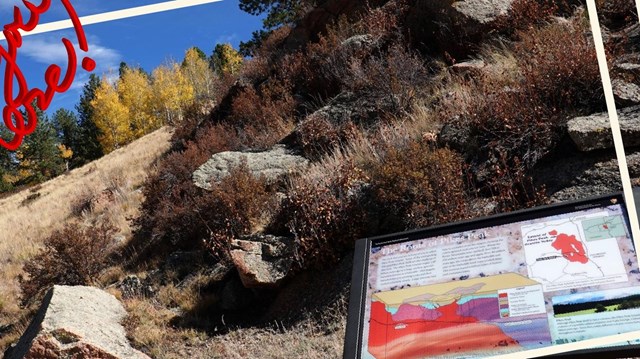
NPS 
NPS/GIP: Mariah Slovacek 
NPS/GIP: Mariah Slovacek Mammoths in Florissant?The warm greenhouse world of the Eocene abruptly transitioned to an icehouse world at the Eocene-Oligocene boundary, as permanent ice began to develop on a previously ice-free Antarctica. In less than a million years, the giant redwoods and many hardwoods of the Florissant Formation became uncommon in the landscape. Rather, cold-hardy spruces, firs, and pines came to dominate the Oligocene Antero formation of South Park, 30 miles to the west of here. Global temperatures continued to cool into the Pleistocene Ice Age. Glaciers developed on Pikes Peak, though not in the Florissant valley. However, it was still cold enough that animals like Columbian mammoth once lived here. 
NPS How Old Was this Mammoth?Radiocarbon dating is a way scientists can determine the age of more recent fossils. Using carbon, the building block of organic tissues, scientists can determine an approximent age of fossils as long as they are not more than 50 thousand years old. This is because, over time, the parent element, carbon-14 decays into the daughter element, nitrogen-14. This happens at a predictable rate, with half of the original carbon-14 into nitrogen-14 every 5,700 years. However, by about 50 thousand years, the amount of carbon is so small that it is at unmeasureable levels and thus nothing older can be dated this way. The Florissant mammoth was dated this way and has been estimated to be around 49,930 years old! 
NPS/GIP: Mariah Slovacek 
Stop 11: Top of a Forest, Bottom of Lake
Click her to go to Stop 11. 
Virtual Tour Homepage
Explanation of the virtual tour and links to all stops. 
Stop 13: Root's of Pikes Peak
Click here to go to Stop 13. |
Last updated: December 8, 2021
